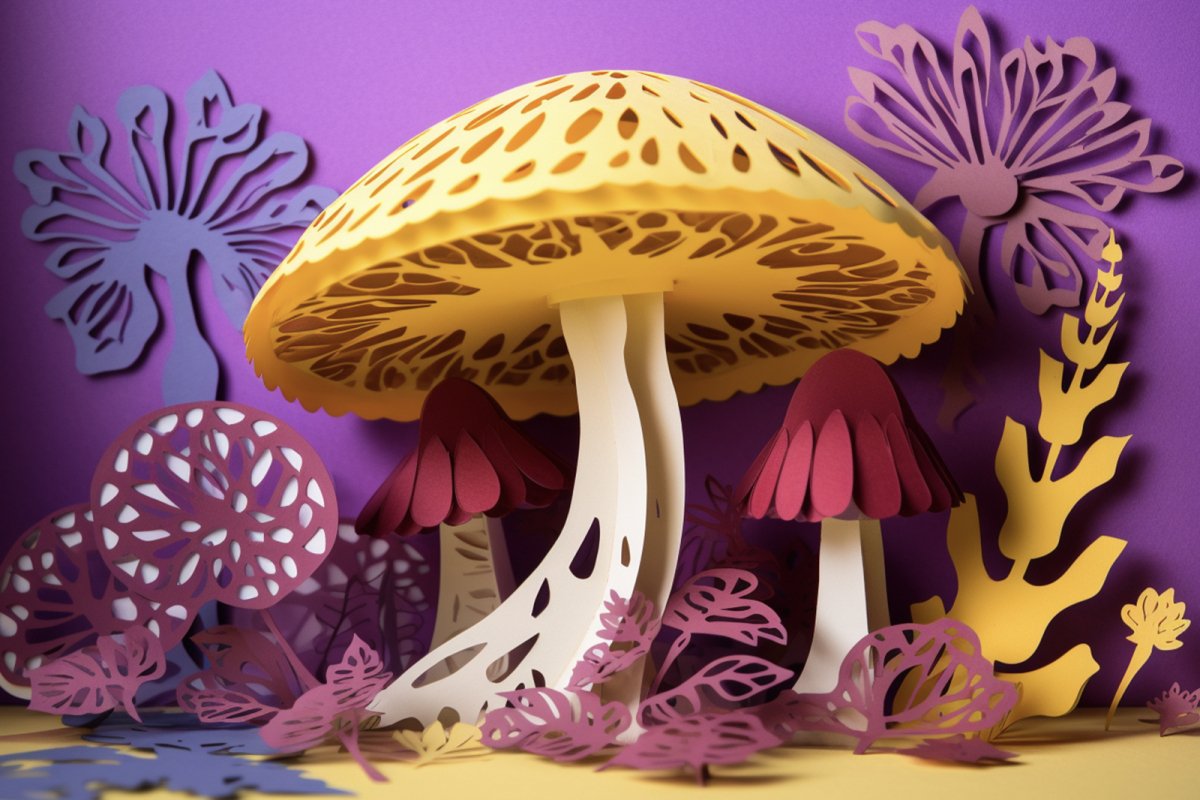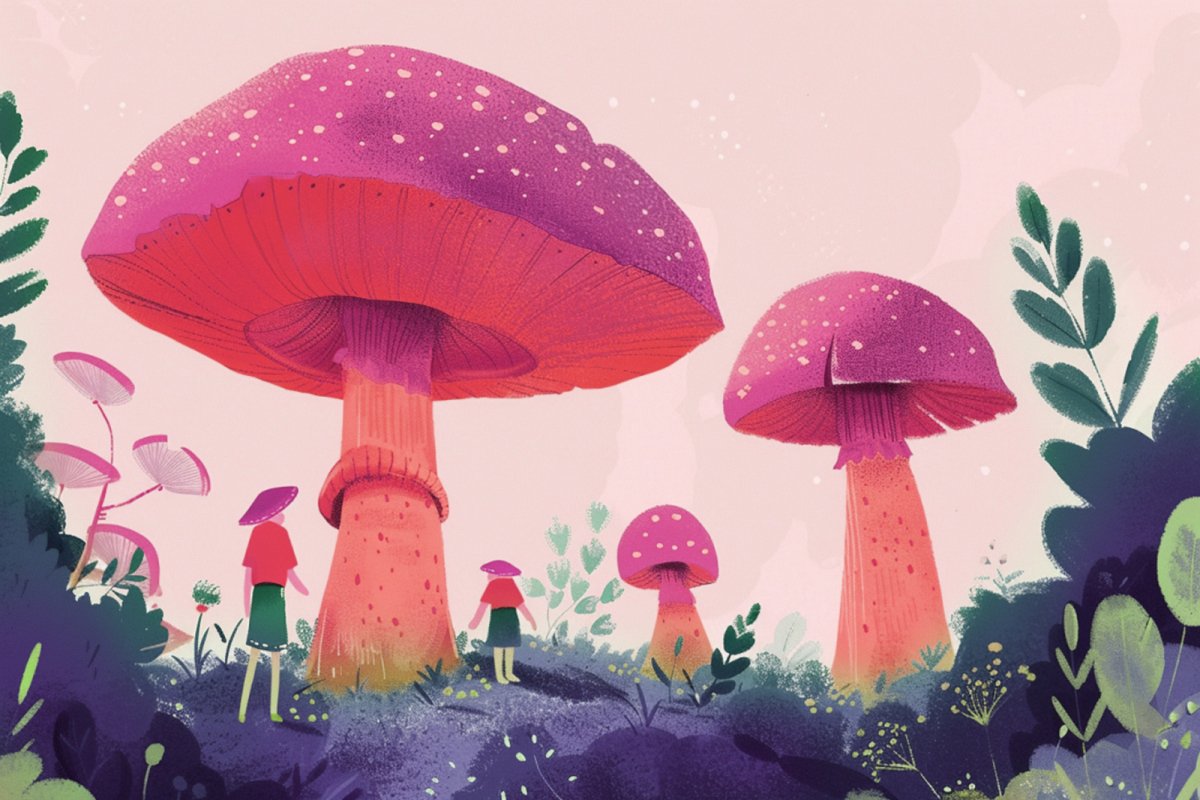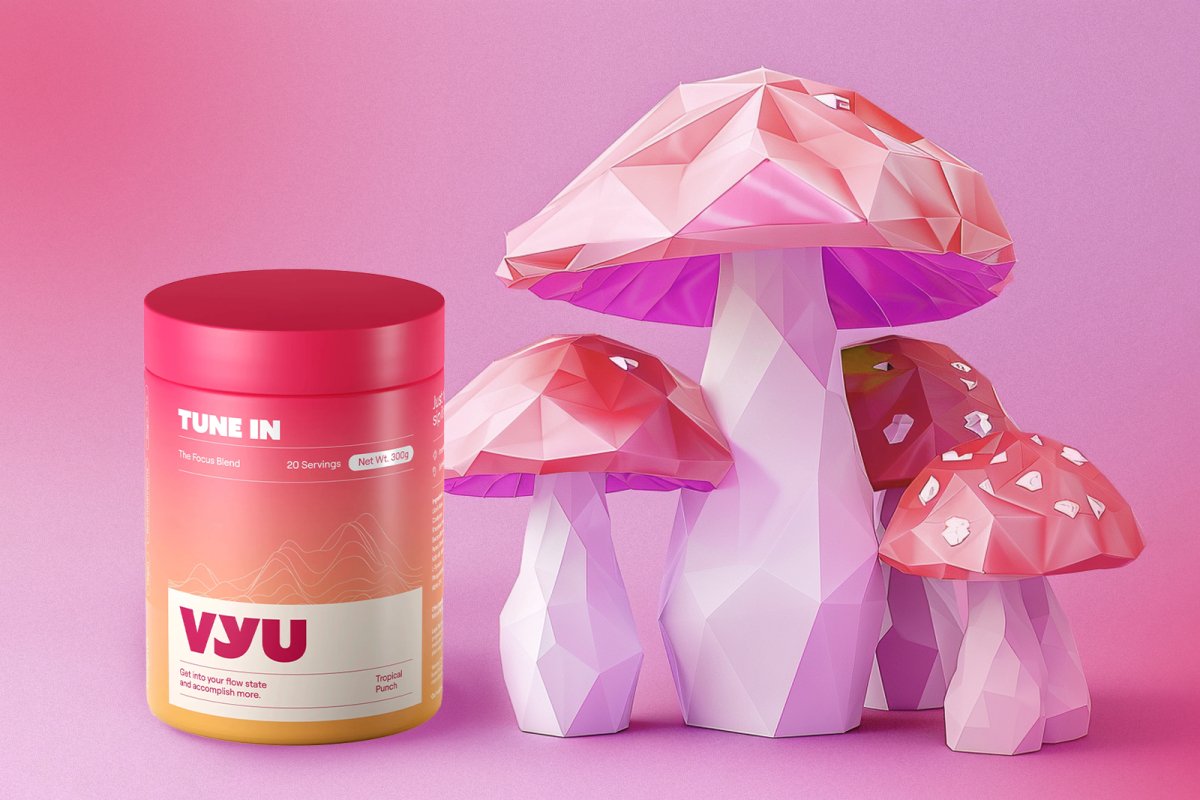

Benefits of Chaga Mushroom
Published:
Updated:
Mushrooms have been gaining recognition as superfoods in recent years. These edible fungi have also been used as medicine for thousands of years in Asia. These fungi are functional mushrooms since they have both nutritional and therapeutic benefits.
While there are over 10,000 types of mushrooms, only a handful are edible. So, naturally, you need guidance if you want to use mushrooms.
So in this blog, we shine the spotlight on the chaga mushroom. We delve into its history to establish its origins. We highlight its potential benefits, how to use it, and where to find it.
Key Takeaways
- Chaga mushrooms thrive in cold climates, growing on birch trees from where they derive their nutrients.
- Chaga mushrooms were widely used in traditional medical systems like TCM, where they are key to boosting health, promoting longevity, and preserving youthfulness.
- Their therapeutic value depends on growth conditions. Those grown in the harsh, challenging climates of the Northern Hemisphere have the highest quality.
What is Chaga?
Chaga mushroom is a fungus that grows on birch trees in cold climates. It looks like a clump of burnt charcoal, roughly 10-15 inches. Beneath the tough outer cover lies a soft core with a bright orange color.
Chaga does not taste like traditional mushrooms. Instead, it has a bitter, vanilla taste.
This mushroom is mostly sold in powder form and brewed to make herbal tea. It is also available as capsuled supplements.
The History of Chaga Mushroom
The first documented use of the chaga mushroom goes way back to the 12th century. Natives of Russia and Siberia used chaga as medicine for diverse health issues. For instance, Tsar Vladimir Monomakh purportedly used it to cure his lip cancer.
The Khanty people of Western Siberia burnt chaga mushrooms in a fire. They dipped the smoldering conks in hot water to create an antiseptic solution to clean women's genital area after birth or during menstruation.
Chaga mushroom is also mentioned in medicinal texts from the 16th century as a treatment for tuberculosis and ulcers. And during WWII, this mushroom was used to make energy drinks for soldiers to boost energy and focus.
In Alaska, the use of chaga mushrooms is deeply entrenched in local folklore, passed down through the generations, and sustained by tribal elders. And in the earliest medical texts known to manMateria MedicaEmperor Shen-nung referred to chaga as the 'King of the Herbs.'
Quite the history!
Where Can I Find Chaga Mushroom?
Chaga mushroom grows well in cold climates. So it thrives in the Northern Hemisphere countries of Russia, Canada, Northern Europe, and Alaska. You can also find it in the Northern states of the Continental US.
Interestingly, the nutrient quotient in chaga mushrooms depends on temperature extremities. The more extreme, the better. As such, in Alaska, temperatures change throughout the year from highs of 32C (90F) in the summer to -45C (-50F) and below in the winter, producing the most potent chaga.
Indeed, the antioxidant levels in Alaskan chaga have been shown to exceed the Siberian varieties by almost 40%.
Chaga Mushroom According to Taoism and TCM
Given how integrated medicinal mushrooms are in traditional Chinese medicine (TCM), how do Chaga mushrooms fit within the larger context of Taoism and TCM?
Taoism is a Chinese philosophical school of thought that espouses the need to live harmoniously with the Tao (universe). So, Taoists hold that the spirit is immortal, and after death, it rejoins the universe.
Despite possibly being the oldest medical system, TCM has changed little. It embraces the idea that health and well-being are functions of a life force called Qi.
Qi constantly moves through the body, and any disruptions to its movement cause disease and illness. These disruptions are due to imbalances in the opposite and complementary forces (Yin and Yang) that make up Qi.
Like Taoism, TCM holds that humans are microcosms of the universe. That they are interconnected with and subjected to the forces of nature. As such, a balance between these three entitieshumans, nature, and the universeis fundamental to good health.
So, in TCM, chaga mushrooms boost health, promote longevity, and preserve youthfulness. In Taoism, this mushroom is considered a Qi tonic nourishing Jing, Qi, and Shen. Jing is a life-force energy, our primal essence. Our life choices determine whether we nurture and protect Jing or leak it.
Qi is our daily vitality typically dictated by what we consumethe air, food, and water. Shen loosely translates to our spirit energy (overall mood). Excess Qi energy spills over and replenishes Jing, which, in turn, makes Shen radiate.
Chaga Mushroom Nutrition
The nutritional value of chaga mushrooms depends on growth conditions. Generally, this mushroom is a powerhouse of antioxidants and other beneficial compounds such as:
- Triterpenoids
- Polysaccharides
- Melanin
- Polyphenols
- Flavans
This mushroom is also rich in minerals like calcium, potassium, silicon, iron, copper, magnesium, germanium, and zinc. Research shows these are vital for skin health, cell functioning, cardiovascular health, and immune system function.
Chaga Supports the Immune System
As an adaptogenic and medicinal mushroom, chaga supports many functions. In particular, it de-stresses the body, enhances antioxidant activity, and modulates the immune system.
Owing to its rich polysaccharide content, notably proteoglycans and beta-glucans, chaga extract may stimulate the immune system and support the production of natural killer (NK) cells. Another compound, xylogalactoglucan, is noted to induce cell apoptosis (programmed cell death). This helps the body get rid of sick or abnormal cells.
Chaga for Gut Health and Digestion
The polysaccharides in chaga mushrooms also boost the immune system by supporting gut microbiota. They act as probiotic food for healthy bacteria in the gut. As such, chaga extract may have a role in modulating the gut microbiome, thus helping prevent digestive problems like IBS and leaky gut.
Cumulatively, chaga mushroom shows immense potential in downgrading systemic levels of gut inflammation, a leading cause of gastrointestinal autoimmune diseases and digestive problems.
Chaga Mushrooms Lower Blood Sugar and Cholesterol
We are pretty familiar with the dangers of high blood sugar and cholesterol. They can cause serious health issues like heart and kidney disease, stroke, loss of vision, and nerve damage, to mention a few.
Fortunately, research shows that chaga mushrooms may help lower cholesterol and blood sugar. This was established in an animal study that showed chaga extract reduced triglyceride and malondialdehyde levels in diabetic mice. At the same time, it increased the levels of good cholesterol and hepatic glycogen in the liver of diabetic mice.
This is because chaga is rich in triterpenoid compounds that help lower blood glucose, triglycerides, and LDL.
However, it is worth remembering that no human studies support chaga mushrooms' beneficial effect on diabetes.
Chaga Boosts Antioxidants
One attribute of mushrooms that is certain is that they are chockful of antioxidants. Chaga is no exception. Tests indicate it is one of the richest sources of antioxidants on record, with ORAC (Oxygen Radical Absorbency Capacity) values nearing 150,000. This is three times that of acai berries which are well-known for their high antioxidant levels.
The main antioxidant compound in chaga are polyphenols such as Gallic acid, inonoblins, and protocatechic acid. These substances are implicated in various roles, including skin health and immune system functions.
When we ingest these compounds, they trigger the release of endogenous antioxidants like superoxide dismutase (SOD) and glutathione. These antioxidants search and destroy free radicals in the body, which in excess, cause cell and organ damage.
Free radicals are natural byproducts of cellular reactions that produce energy. So consuming foods rich in antioxidants like chaga mushrooms helps us have a good balance of free radicals in the body.
Chaga for Skin Health
We all want beautiful, youthful skin. In chaga mushrooms, we may have nature's own solution.
Chaga contains unique compounds that may be beneficial for skin health. According to studies, this mushroom possesses healthy long-chain sugars, e.g., beta-glucans and polysaccharides, that enhance the skin's defenses, moisturize, and keep it naturally hydrated.
Recall the SOD we talked about earlier? Well, this protective enzyme helps neutralize free radicals that damage the skin. They also protect the skin from the harmful effects of UV rays and restore damaged DNA.
These antioxidants also help reduce oxidative stress, which contributes to premature aging typically characterized by discoloration, dark spots, and wrinkles. What's more, chaga mushrooms might even help improve autoimmune skin disorders like eczema and psoriasis due to their potent anti-inflammatory activity.
You can make your own chaga skin cream and enjoy this mushroom's benefits.
Chaga Mushrooms Act as an Internal Sunscreen
Our bodies' natural sunscreen is melanin; it is also the pigment that gives color to our skin. The more melanin you have, the darker your skin tone.
Chaga mushrooms are rich in melanin. This means it could help protect skin cells and DNA from damage by the sun's UV rays. One way of increasing melanin levels is by eating foods rich in vitamin A, such as whole milk, beef, eggs, and cheese. Alternatively, you can take chaga mushrooms.
Melanin also helps revamp the immune system, which is crucial when the skin is damaged, making the body vulnerable to external disease-causing pathogens.
Chaga mushrooms also contain ergosterol, a vitamin D2 precursor that the body converts into vitamin D3. D vitamins help minimize systemic inflammation and improve mood and bone density.
Chaga Mushrooms Cleanse, Decalcify, and Activate the Pineal Gland
Ever wondered why you feel sleepy as night approaches? It is because your brain increases the production of melatonin. Also known as the 'sleep hormone,' melatonin regulates the sleep-wake cycle, essentially telling you when to sleep or wake.
The pineal glanda small pea-sized endocrine gland located at the base of the brainis responsible for melanin production.
As we age, the pineal gland is calcified by mineral deposits like calcium, phosphorus, and fluoride. This prevents it from performing its role efficiently. One way of avoiding this from happening is by taking chaga mushrooms.
This mushroom contains melanin, which prevents calcification when concentrated around the pineal gland. This keeps it active and capable of efficiently regulating the sleep-wake cycle.
Chaga Mushroom Benefits Who the Most?
Chaga mushrooms have a broad spectrum of benefits, so they may be beneficial for people with health problems like:
- IBS, Crohn's disease, and digestive problems
- High blood sugar levels and diabetes
- Insulin resistance
- Chronic stress and inflammation
- Liver disease
- Allergies
- Weak or an overactive immune system
- High cholesterol, LDL, and triglyceride levels
However, chaga mushrooms are not just for people with health problems. These edible fungi are perfectly safe for consumption by healthy individuals as they may support good health and longevity.
The Impact of the Northern Lights on Wild Chaga
Chaga mushrooms thrive in harsh and challenging climates, which is why the Northern Hemisphere region produces some of the most potent chaga mushrooms. So, it appears geographical location is an important determinant of the quality of chaga mushrooms.
It seems there is a correlation between the Northern Lights and the quality of chaga mushrooms growing in the Northern regions. This is because these regions are bombarded by solar winds, which create Qi energy that is eventually absorbed by the mushrooms.
Mushrooms do not have chlorophyll, so they cannot utilize the sun's energy to make food. Instead, they grow faster at night using lunar and Qi energy (from the Northern Lights). Lab analyses show that chaga mushrooms grown in the Northern latitudes are way more potent than those locally grown.
How to Prepare Chaga Tea
Chaga mushrooms are ground into powder and then infused into hot water/beverage to make herbal tea. The recommended dose is 1-3 grams of powder.
You could also simmer raw chaga chunks at low temperatures for at least an hour and not more than 8 hours. The low temperature preserves valuable ingredients. Once cooked, strain and drink the tea. You can reuse the conk until it no longer produces a dark, coffee-like brown color.
How Much Chaga Tea Should You Drink Per Day?
For newbies, we recommend starting with low doses. A daily cup of chaga tea in the morning is enough. Assess how your body reacts before you increase the dosage.
Precautions and Side Effects of Chaga Mushroom
Chaga mushrooms are safe and well-tolerated. However, due to a lack of clinical research, this mushroom is neither listed nor monitored by the FDA.
While a growing body of animal studies suggests that chaga may have immense health benefits, the lack of human studies indicates little interest, probably because pharmaceutical companies cannot patent a mushroom as medicine.
As for side effects, not everyone who takes chaga mushrooms will experience any adverse symptoms. But to be safe, always consult a medical professional before supplementing with chaga mushrooms.
Similarly, we recommend not taking chaga mushroom supplements if you are on blood-thinning medication. Chaga extract may lower blood sugar levels, so if you are on blood-lowering medicines, it might cause your blood sugar levels to fall even further.
Does Chaga Really Work?
No clinical studies support the efficacy of chaga in treating any health condition. However, if the growing body of animal studies supporting its therapeutic and medicinal benefits is anything to go by, chaga mushrooms might be the antidote to many of humanity's health problems.
Where to Buy High-Quality Chaga Mushroom
If you want high-quality chaga mushrooms, go for wild ones. This variety derives its nutrients and vital ingredients from the birch tree, which is also medicinal. The chaga fungus is parasitic; it digests nutrients from the birch tree and concentrates them into a more bio-available form for humans. Nature is truly amazing!
Chaga mushrooms can also be grown on grain in the lab. Needless to say, these have far less valuable compounds and are not as potent as the wild variants. Therefore, the best sources of high-quality chaga mushrooms are the cold regions of Russia, Siberia, Canada, Alaska, and Northern Europe.
Also, when buying chaga extracts, go for those extracted with hot water and alcohol. Hot water brings out the immune-modulating compounds, e.g., beta-glucans, polyphenols, and polysaccharides, while alcohol extracts the adaptogenic ingredients, e.g., sterols and triterpenoids.
Final Thoughts
Chaga mushroom is adaptogenic and medicinal, and its storied history in traditional medical systems like TCM is a testament to this. Packed with a ton of incredible compounds, chaga may help improve immunity and reduce chronic inflammation, blood sugar, and cholesterol levels.
Nonetheless, human studies are needed to confirm these claims. We also need more information regarding its potential side effects and effective dosage. If you have any concerns about using chaga, it is best to consult a healthcare professional.
Chaga Mushroom Benefits: FAQs
What Does Chaga Do for Your Body?
Chaga mushrooms do a lot of good things for your body. For instance, they may help relieve stress, reduce inflammation, blood sugar and cholesterol levels. It may also mitigate the effect of oxidative stress while boosting immunity and enhancing overall life quality.
Is it Safe to Take Chaga Every Day?
Low doses of chaga mushrooms appear perfectly safe to take every day. However, listen to how your body responds and act accordingly.
How Does Chaga Make You Feel?
In TCM, chaga mushrooms were used to revitalize and sustain good health. Today, they are used to boost energy levels, focus, and vibrancy.
VYU Blog Disclaimer
The information provided on the VYU blog is intended solely for informational and entertainment purposes. It should not be used as a substitute for professional medical advice, diagnosis, or treatment.
Always seek the advice of your physician or other qualified health provider with any questions you may have regarding a medical condition or treatment and before undertaking a new healthcare regimen. Never disregard professional medical advice or delay in seeking it because of something you have read on this website.
For more information, check out our FAQs and contact page.
Blog posts
-

Host Defense vs. Om Mushrooms vs. VYU
Compare Host Defense, Om Mushrooms, and VYU for your health journey. Find out which offers the best blend of taste and benefits. Elevate your wellness today! -

Genius Mushrooms vs. Om Mushroom vs. VYU
Learn why VYU is the superior choice for functional beverages, offering exceptional taste and health benefits to boost your mental performance -

Om Mushrooms vs. Four Sigmatic vs. VYU
Compare Om Mushrooms, Four Sigmatic, and VYU for your health journey. Choose the ideal beverage to boost your wellness today!
Sign up to our productivity newsletter
and get 10% off your first order.



